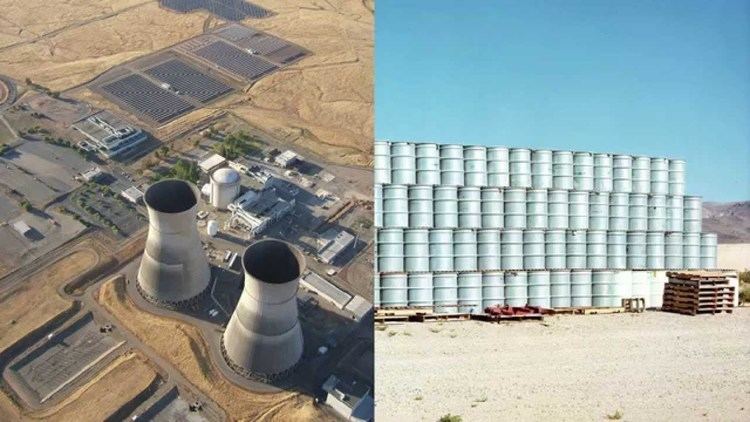End date 1992 | ||
 | ||
Full case name New York, Petitioner, v. United States et al.; County of Allegany, New York, Petitioner, v. United States; County of Cortland, New York, Petitioner, v. United States et al. Citations 505 U.S. 144 (more)112 S. Ct. 2408; 120 L. Ed. 2d 120; Nuclear Reg. Rep. P 20,553; 34 ERC 1817; 60 USLW 4603; 22 Envtl. L. Rep. 21,082 Prior history 757 F. Supp. 10 (N.D.N.Y. 1990), aff'd, 942 F.2d 114 (2d Cir. 1991), cert. granted, 502 U.S. 1023 (1992). Subsequent history 978 F.2d 705 (2d Cir. 1992) Majority O'Connor, joined by Rehnquist, Scalia, Kennedy, Souter, Thomas, as well as White, Blackmun, Stevens (parts III-A and III-B only) Concur/dissent White, joined by Blackmun, Stevens Similar Printz v United States, United States v Lopez, United States v Morrison, South Dakota v Dole, United States v Darby Lu | ||
New york v united states quimbee com
New York v. United States, 505 U.S. 144 (1992) was a decision of the United States Supreme Court. Justice Sandra Day O'Connor, writing for the majority, found that the "Take Title" provision of the Low-Level Radioactive Waste Policy Amendments Act of 1985 exceeded Congress's power under the Commerce Clause.
Contents
- New york v united states quimbee com
- Justice o connor new york v united states
- Background
- The take title provision
- Dissent
- References
Justice o connor new york v united states
Background
The Low-Level Radioactive Waste Policy Amendments Act was an attempt to imbue a negotiated agreement among the States with federal incentives for compliance. The problem of what to do with radioactive waste was a national issue complicated by the political reluctance of the states to deal with the problem individually. New York was a willing participant in the compromise, and after the Act was passed, it announced locations in the counties of Allegany and Cortland as potential places for waste storage. Public opposition in both counties was immediate and very determined, and eventually helped motivate New York to challenge the law.
The Act provided three "incentives" for states to comply with the agreement. The first two incentives were held constitutional. The first incentive, "monetary" incentive, allowed states to collect gradually increasing surcharges for waste received from other States. The Secretary of Energy would then collect a portion of this income and redistribute it to reward states achieving a series of milestones in waste disposal. This was held to be within Congress's power under the Taxing and Spending Clause, and an "unexceptionable" exercise of that power. The second incentive, the "access" incentive, allowed states to reprimand states that missed certain deadlines by raising surcharges or eventually denying access to disposal at those state's facilities completely. This was held to be a permitted exercise of Congress's power under the Commerce Clause.
The third incentive, requiring states to "take title" and assume liability for waste generated within their borders if they failed to comply, was held to be impermissibly coercive and a threat to state sovereignty, thereby violating the Tenth Amendment.
The "take title" provision
After noting the constitutionality of the first two incentives, Justice O'Connor characterized the "take title" incentive as an attempt to "commandeer" the state governments by directly compelling them to participate in the federal regulatory program. The federal government "crossed the line distinguishing encouragement from coercion." The distinction was that with respect to the "take title" provision, the States had to choose between conforming to federal regulations or taking title to the waste. Since Congress cannot directly force States to legislate according to their scheme, and since Congress likewise cannot force States to take title to radioactive waste, O'Connor reasoned that Congress cannot force States to choose between the two. Such coercion would be counter to the federalist structure of government, in which a "core of state sovereignty" is enshrined in the Tenth Amendment.
The Court found the "take title" provision to be severable, and, noting the seriousness of the "pressing national problem" being addressed, allowed the remainder of the Act to survive.
Dissent
Justice White wrote a dissenting opinion that was joined by Justices Blackmun and Stevens. He stressed that the Act was a product of "cooperative federalism", a situation where the states "bargained among themselves to achieve compromises for Congress to sanction". Noting that Congress does have the power to directly regulate radioactive waste (as opposed to "compelling state legislatures" to regulate according to their scheme), White said that the "ultimate irony of the decision today is that in its formalistically rigid obeisance to 'federalism,' the Court gives Congress fewer incentives to defer to the wishes of state officials in achieving local solutions to local problems".
